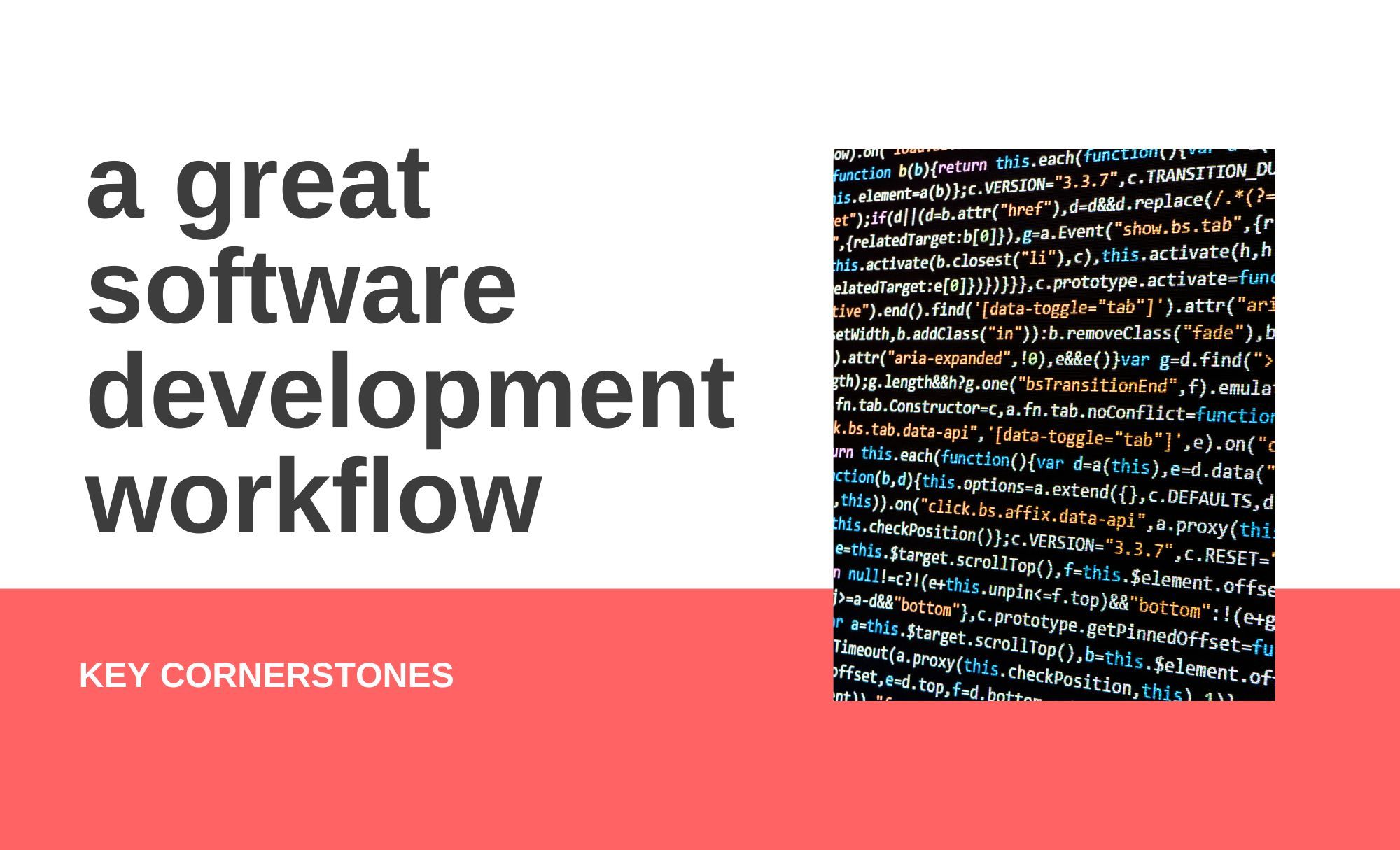The software development workflow is the process of managing a software project from start to finish. Agile project management is built around a workflow that balances the team’s need for flexibility with functional and technical standards.
Merging these two together, makes, in my view some of the most flexible approaches to new product development that there is.
Don’t get me wrong, there are better approaches, but you are here because you need to get a great new product, fast.
The agile software development workflow provides a scalable, and collaborative approach for implementing your product. With a bit of automation and a robust process in place, your team can focus on their highest-value activities to ensure the delivery of quality software.
In today’s world, where software solutions are developed at a rapid pace and on complex requirements, organizations demand more from their development teams. This requires more from the developers as well. In this article, we’ll talk about the cornerstones on how Agile can help your team deliver high-quality software in a predictable manner.
Be concrete in the short term and flexible in the long term
If you want to develop something, that something, at least for the short term has to be clear, realistic, and concrete.
You should always make sure that you know what your team will be delivered in the next “cycle” and except just that. If that is unclear, it must be clarified.
Read more about how to operational do a backlog refinement so you are clear on the short-term goals:
Your flexibility should be in the long term, as with any new product, validation and customer input will provide you a better direction than anything else.
Obsess about testing
I know that you want to get this new feature out fast but always remember: better late than low quality.
Test what you can and how you can. There are approaches to how you can do this better, but no matter the budget and time, no testing is unacceptable.
If you can not follow an approach or lack the people to do so, you can still do something. My general recommendation is to use your platform as you would think a user would.
Release features fast and little by little
I know that you are always working to make your product better, but your users should see that and provide feedback on that.
Decouple your big features in small features and release them one by one, every sprint or every other sprint. This will enable you to:
- Get feedback from real users rather than just your ideas
- Have concrete results in the short term both delivery-wise and product-wise and with real feedback from users, flexible and adjustable in the long term (see above)
- You need to test less, and you can make fewer mistakes.
- You can roll back, and it will cost you less.
Here is a great development workflow
As always, I don’t want to focus on key cornerstones only, but also give you a great development workflow in high-level terms.
This should help you with a “wireframe” of a good process that you can adjust and tinker to your own needs. I have also added links on more details for the specific steps:
- You have a great product idea and you have decided on the features that you will need to implement. Here is a new product workflow
- Chose your project management tool of choice that would work on a ticket-based system (Jira, Asana, Trello – whatever floats your boat)
- Divide the logic into tickets
- Refine the tickets with the team
- Be concrete in the short term and decide which tickets you will implement. based on your agreed-upon project management approach
- Define code review rules, if you have a big team. If not, then this step is optional
- Once the definition of done is achieved, test those features.
- Before you release, do a regression testing
- Release and see how production goes
- Re-iterate if you need to.
Thats it.





